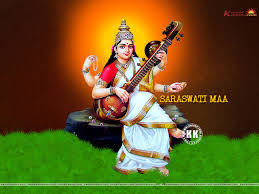Veadantasara-15:
141. The five uncompounded elements, together with the tendencies of to their cause, namely Consciousness associated with ignorance.
142. This ignorance and the Consciousness associated with it, such as Isvara etc., are resolved into the transcendent Brahman unassociated with ignorance, which is the substratum of them all.
143. By this process of superimposition and de-superimposition the precise significance of “That” and “Thou” is clearly determined.
144. To explain: Collective ignorance and the rest, Consciousness associated with it and endowed with omniscience etc., as also the Pure Consciousness unassociated with any attribute – these three, when appearing as one and inseparable like a red-hot iron ball, become the primary meaning of the word “That”.
145. The unassociated Consciousness which is the substratum of the limiting adjuncts and of Isvara which they limit, is the implied meaning of “That”.
146. Individual ignorance and the rest, Consciousness associated with it and endowed with partial knowledge etc., as also the Pure Consciousness unassociated with any attribute – these three when appearing as one and inseparable like a red-hot iron ball, become the primary meaning of the word “Thou”.
147. The unassociated transcendent Consciousness – the inward Bliss - which is the substratum of the limiting adjuncts and of the Jiva which they limit, is the implied meaning of the word “Thou”.
148. Now is being described the meaning of the great Vedic dictum (Mahavakyam): This dictum is a proposition conveying identity, by virtue of the three relations of its terms, viz., “Thou art That”.
149. The three relations are: Samanadhakaranya or the relation between two words having the same substratum, Visesana-visesyabhava or the relation between the imports of two words qualifying each other (so as to signify a common object); and Laksya-laksana-bhava or the relation between two words and an identical thing implied by them, here, the Inner Self.
150. Compare – (The relations are:) The relation between two words having the same substratum; that between two words qualifying each other (so as to signify a common object), and the relation between two words and an identical thing implied by them (here the Inner self).
Continues..




Comments